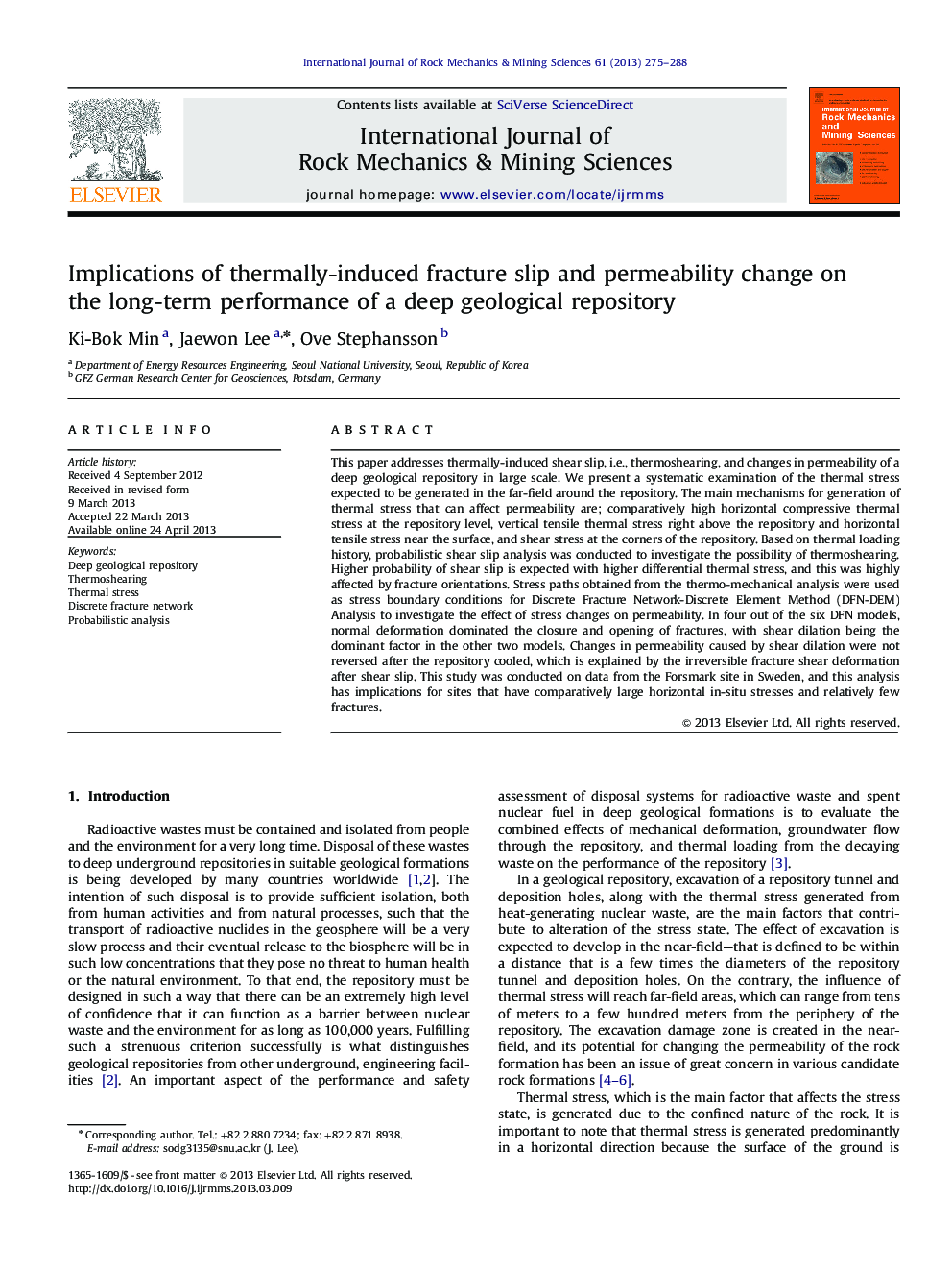| کد مقاله | کد نشریه | سال انتشار | مقاله انگلیسی | نسخه تمام متن |
|---|---|---|---|---|
| 809241 | 1468708 | 2013 | 14 صفحه PDF | دانلود رایگان |

• Thermoshearing and permeability change of a geological repository is analyzed.
• Differential compressive stress and tensile stress cause permeability change.
• Probabilistic shear slip analysis was conducted for a geological repository.
• Shear-induced permeability increase was not recovered after the repository cooled.
• This study has implication on the site with high in situ stress and few fractures.
This paper addresses thermally-induced shear slip, i.e., thermoshearing, and changes in permeability of a deep geological repository in large scale. We present a systematic examination of the thermal stress expected to be generated in the far-field around the repository. The main mechanisms for generation of thermal stress that can affect permeability are; comparatively high horizontal compressive thermal stress at the repository level, vertical tensile thermal stress right above the repository and horizontal tensile stress near the surface, and shear stress at the corners of the repository. Based on thermal loading history, probabilistic shear slip analysis was conducted to investigate the possibility of thermoshearing. Higher probability of shear slip is expected with higher differential thermal stress, and this was highly affected by fracture orientations. Stress paths obtained from the thermo-mechanical analysis were used as stress boundary conditions for Discrete Fracture Network-Discrete Element Method (DFN-DEM) Analysis to investigate the effect of stress changes on permeability. In four out of the six DFN models, normal deformation dominated the closure and opening of fractures, with shear dilation being the dominant factor in the other two models. Changes in permeability caused by shear dilation were not reversed after the repository cooled, which is explained by the irreversible fracture shear deformation after shear slip. This study was conducted on data from the Forsmark site in Sweden, and this analysis has implications for sites that have comparatively large horizontal in-situ stresses and relatively few fractures.
Figure optionsDownload as PowerPoint slide
Journal: International Journal of Rock Mechanics and Mining Sciences - Volume 61, July 2013, Pages 275–288